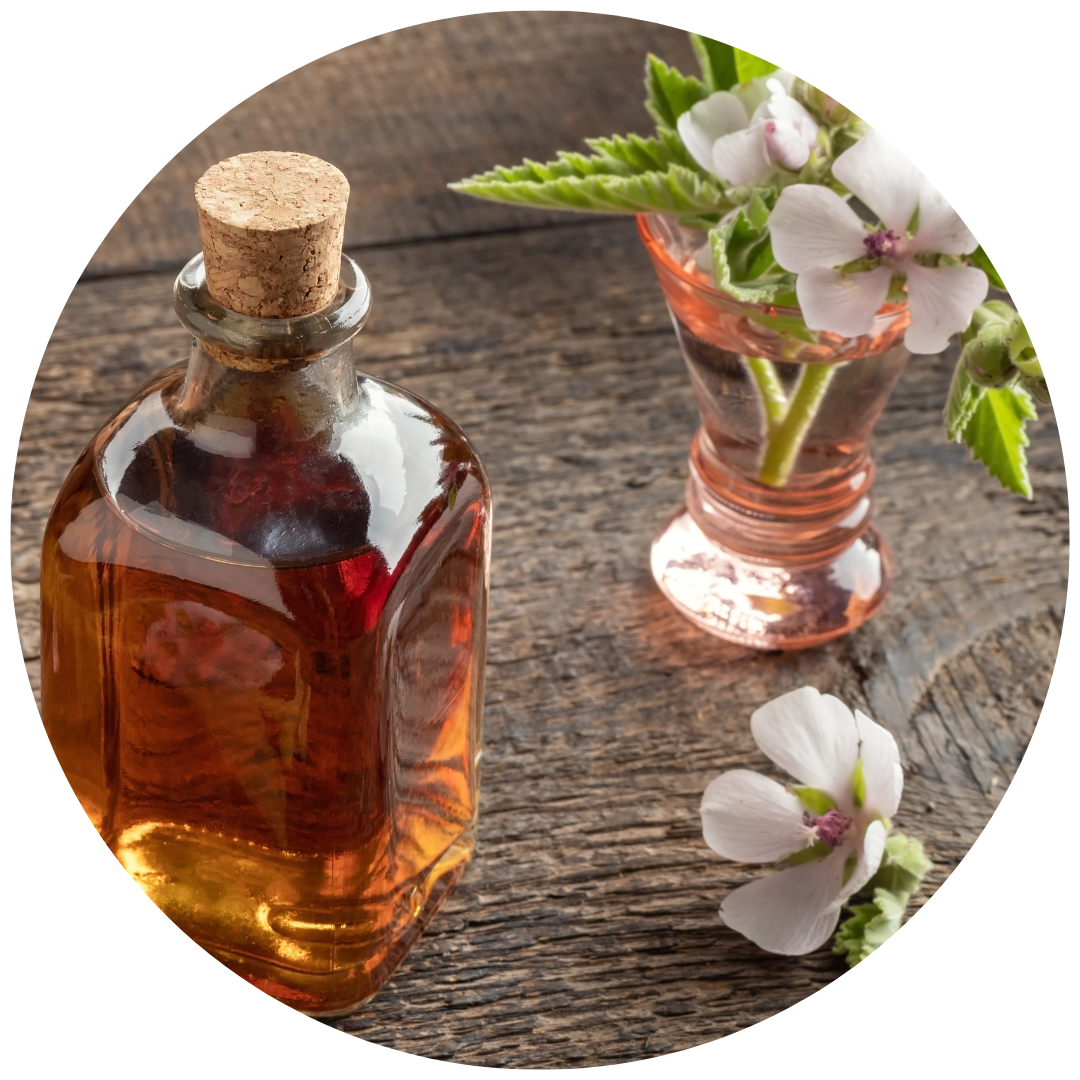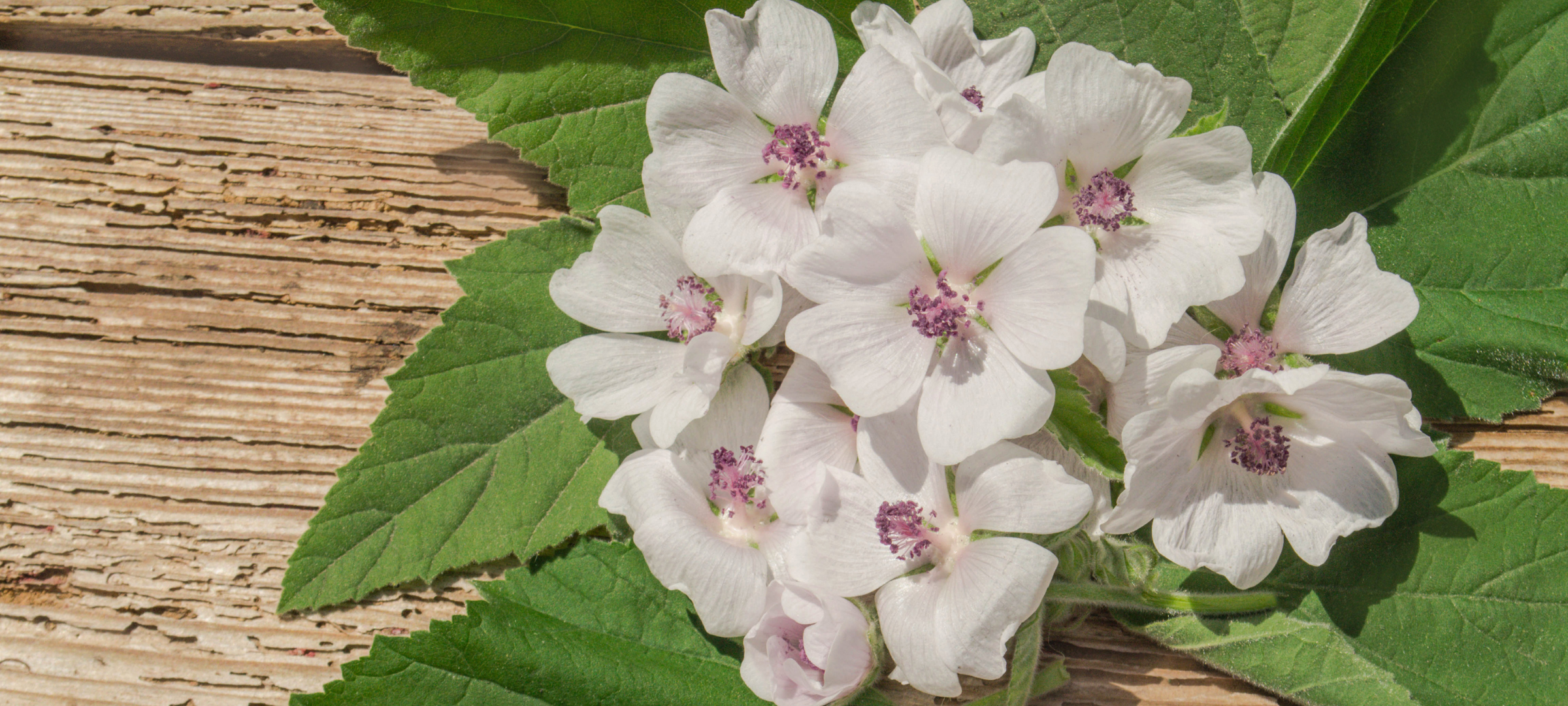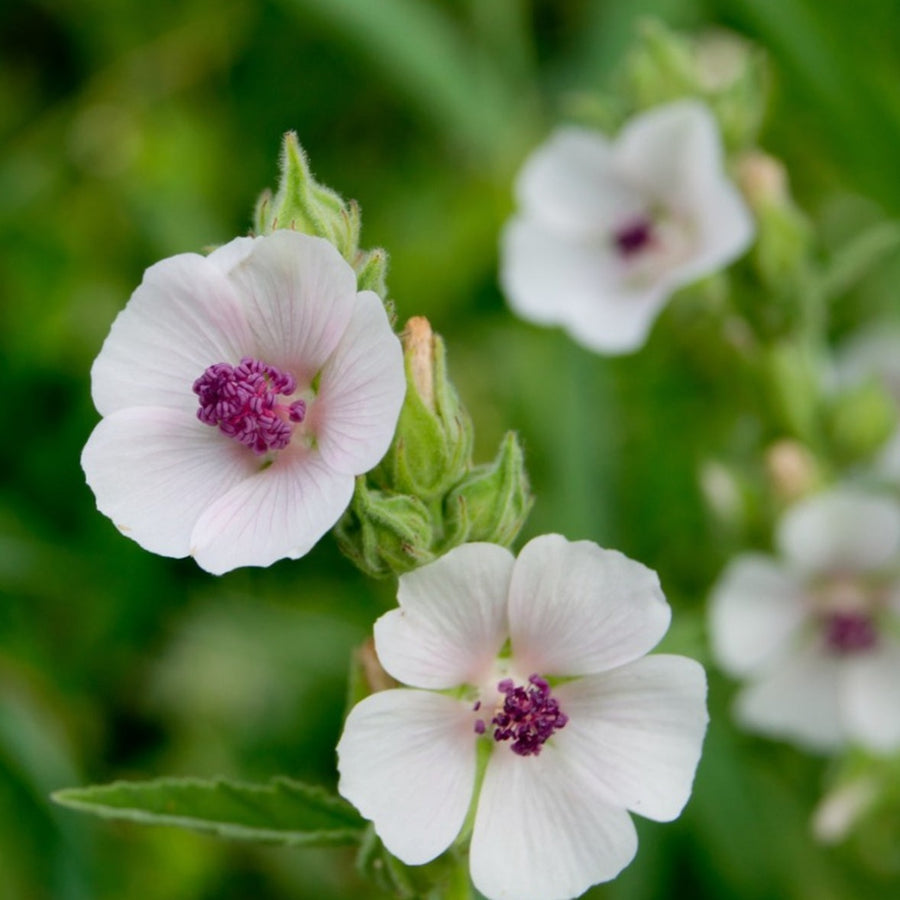
Latin: Althaea officinalis
Part Used: root and leaf
Constituents: root: mucilage, tannins, pectin, asparagine; leaf: mucilage, trace essential oil, polysaccharides, betaine, coumarins, beta-carotene, vitamin B, calcium
Medicinal Actions: root: demulcent, diuretic, emollient, vulnerary; leaf: demulcent, expectorant, diuretic, emollient
Marshmallow has been used for millennia as both an edible food plant and a medicinal herb. Its Latin name, Althaea, comes from the Greek altheo, which means to heal or to cure. It was known throughout ancient Egyptian, Arab, Greek, and Roman cultures, and used to soothe and moisten the mucous membranes of the respiratory, digestive, and urinary systems. Its leaves were used as an external poultice to ease inflammation, and the French used it for calming coughs and upset stomachs in babies.
Pliny said of Marshmallow: 'Whosoever shall take a spoonful of the Mallows shall that day be free from all diseases that may come to him.'
In addition to being eaten as a vegetable, Marshmallow was used to create one of the oldest known desserts, which eventually evolved into the modern day white marshmallow confection. Ancient Egyptians made candies of Marshmallow root and honey, but it was the French who made the earliest version of our modern-day whipped treat. Between the mid-1800s and the early 1900s, marshmallow root was combined with corn syrup, egg whites, and water, then heated and poured into molds. Unfortunately, our modern day marshmallows contain no trace of the Marshmallow plant.
In medieval times, it was grown in monasteries and country gardens, and it continues to be cultivated for harvest throughout Europe. In Germany and some other parts of Europe, Wild Marshmallow is considered a threatened species, so the importation and exportation of wildcrafted plants is restricted.

Uses & Combinations
Marshmallow is an excellent demulcent. The abundant mucilage in its roots helps to relieve inflammation and irritation. Taken as a tea, it makes an effective treatment for reducing flare-ups of the digestive tract where it helps to neutralize excess stomach acid, and for easing coughs as it gently calms the throat tissue. Combine with Licorice and White Horehound to ease bronchitis, or with Comfrey to treat ulcers. The leaves can be used for treating urinary tract irritation.
Externally, the roots can be used to treat varicose veins and skin eruptions. If you add the infusion to a warm bath, it’s effective for soothing eczema and dry skin. Combine Marshmallow with Slippery Elm to make a soothing ointment.
All parts of the Marshmallow plant are edible. The seeds, leaves, and flowers can be added to salad, or the leaves can be steamed like kale or collard greens. The root can be boiled and fried and eaten like a vegetable, or sweetened to make a dessert.
You’ll find Marshmallow root in our Immune Boost tea where it’s blended with Astragalus, Echinacea, and other strengthening herbs to help boost vitality.

Marshmallow water RECIPE
Victorian-era cook, Charles Elmé Francatelli provides the following recipe for Marshmallow water:
Soak one ounce of marshmallow roots in a little cold water for half an hour; peel off the bark, or skin; cut up the roots into small shavings, and put them into a jug to stand for a couple of hours; the decoction must be drunk tepid, and may be sweetened with honey or sugar-candy, and flavoured with orange-flower water, or with orange juice. Marshmallow water may be used with good effect in all cases of inveterate coughs, catarrhs, etc.

Identifying
Features & Cultivation
Marshmallow takes its name from the salt marshes by the sea and along riverbanks in which it grows. It’s a perennial plant that thrives in damp, loamy soil. It grows between 2–5 feet tall and has soft, velvety serrated leaves. The flowers grow in clusters up the stem at the axils of the leaves.













